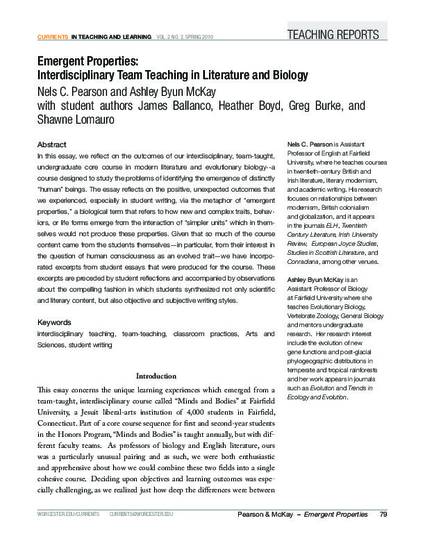
In this essay, we reflect on the outcomes of our interdisciplinary, team-taught, undergraduate core course in modern literature and evolutionary biology--a course designed to study the problems of identifying the emergence of distinctly “human” beings. The essay reflects on the positive, unexpected outcomes that we experienced, especially in student writing, via the metaphor of “emergent properties,” a biological term that refers to how new and complex traits, behaviors, or life forms emerge from the interaction of “simpler units” which in themselves would not produce these properties. Given that so much of the course content came from the students themselves—in particular, from their interest in the question of human consciousness as an evolved trait—we have incorporated excerpts from student essays that were produced for the course. These excerpts are preceded by student reflections and accompanied by observations about the compelling fashion in which students synthesized not only scientific and literary content, but also objective and subjective writing styles.
Available at: http://works.bepress.com/nels_pearson/7/

Copyright 2010 Currents in Teaching & Learning. This content may not be copied or emailed to multiple sites or posted to a listserv without the copyright holder's express written permission. However, users may print, download, or email articles for individual use.